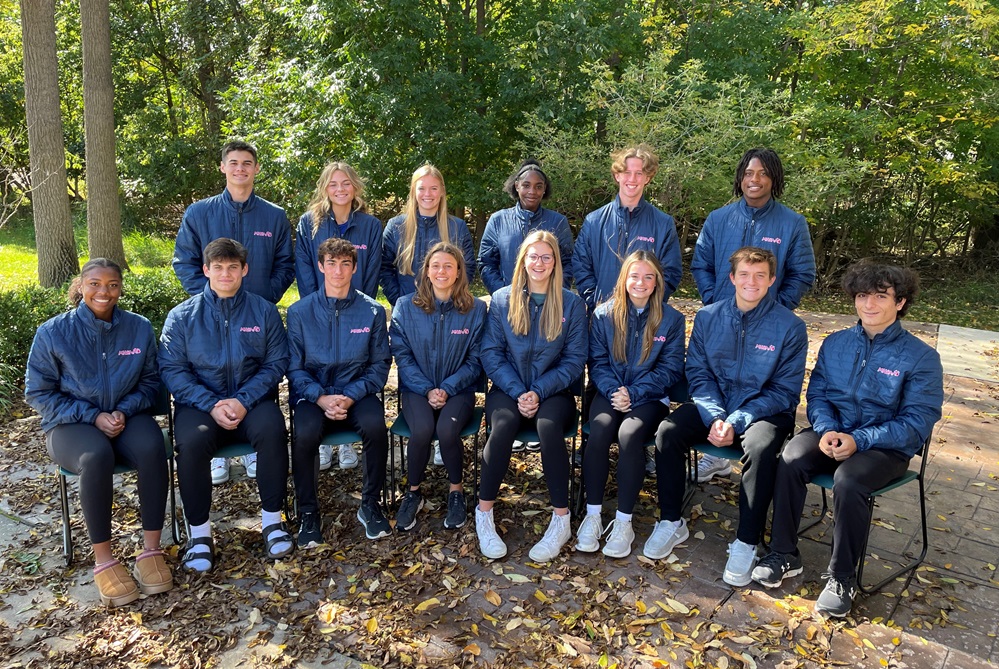
8 Elected to Representative Council
October 18, 2019
By Geoff Kimmerly
Second Half editor
Elections were completed recently to fill positions on the Michigan High School Athletic Association’s legislative body, its Representative Council, with five new members joining three others who received re-election to begin service in December.
Bear Lake athletic director Karen Leinaar was re-elected to continue as one of two at-large statewide representatives, while Gobles athletic director Chris Miller will continue to represent Class C and D schools from the southwestern section of the Lower Peninsula and St. Ignace superintendent Don Gustafson was re-elected as one of two junior high/middle school representatives.
They will be joined by five first-time representatives. Marquette athletic director Alex Tiseo was elected to represent Class A and B schools in the Upper Peninsula, and Midland athletic director Eric Albright was elected to represent Class A and B schools from the northern section of the Lower Peninsula. Maple City Glen Lake athletic director Mark Mattson was elected to serve Class C and D schools in the Lower Peninsula northern section, and Ottawa Lake Whiteford athletic director Jason Mensing was elected to represent Class C and D schools in the southeastern section. Jay Alexander, who began as executive director of the Detroit Public School League this fall, will represent the Detroit Public Schools.
All but Albright and Mattson were elected to two-year terms; Albright and Mattson were elected to serve the second year of two-year terms for Council members no longer able to serve. Albright will replace recently-retired Saginaw Heritage athletic director Peter Ryan. Mattson will be finishing the term of Boyne City athletic director Adam Stefanski, who was previously elected to the Class C/D post while athletic director at Mackinaw City, a Class D school, before beginning this fall at Class B Boyne City.
The Representative Council is the 19-member legislative body of the MHSAA. All but five members are elected by member schools. Four members are appointed by the Council to facilitate representation of females and minorities, and the 19th position is occupied by the Superintendent of Public Instruction or designee. The Council meets three times annually, and five members of the Council convene monthly during the school year to form the MHSAA’s Executive Committee, which reviews appeals of Handbook regulations by member schools.
Additional elections took place to select representatives to the Upper Peninsula Athletic Committee. Negaunee principal Andrew Brunette was elected to represent Class A and B schools, and Ishpeming Westwood athletic director Jon Beckman was re-elected to represent Class C schools. Ontonagon superintendent/principal Jim Bobula was elected to represent Class D schools.
The MHSAA is a private, not-for-profit corporation of voluntary membership by more than 1,500 public and private senior high schools and junior high/middle schools which exists to develop common rules for athletic eligibility and competition. No government funds or tax dollars support the MHSAA, which was the first such association nationally to not accept membership dues or tournament entry fees from schools. Member schools which enforce these rules are permitted to participate in MHSAA tournaments, which attract more than 1.4 million spectators each year.

MHSAA Accepting Student Advisory Council Applications for Class of 2026
By
Geoff Kimmerly
MHSAA.com senior editor
April 11, 2024
The Michigan High School Athletic Association is seeking student-athletes to become members of its Student Advisory Council beginning with the 2024-25 school year.
Four boys and four girls from the Class of 2026 will be selected to two-year terms, and will meet on matters related to maintaining and promoting a proper perspective and sensible scope for high school sports in Michigan. Eight members from the Class of 2025 already are serving on the Council, while eight members from the Class of 2024 are leaving the Council this spring.
To be eligible for the committee, candidates must be a member of the Class of 2026, complete the official application including answering the three short-answer questions, submit a letter of recommendation from a school administrator, have a cumulative GPA of at least 3.0 (on a 4.0 scale) and be available for all scheduled meetings.
In addition, candidates should show a history of leadership on athletic teams as well as with other extracurricular activities, community service projects, or in the workplace; and show an understanding of the role of school sports and have ideas for promoting a proper perspective for educational athletics.
Applications are due to the MHSAA by 4:30 p.m. on April 22. Applications can be downloaded from the Student Advisory Council page of the MHSAA Website and must be returned via e-mail, fax or any mail delivery service.
The Student Advisory Council meets six times each school year, and once more for a 24-hour leadership camp. In addition to assisting in the promotion of the educational value of interscholastic athletics, the Council discusses issues dealing with the 4 S’s of educational athletics: scholarship, sportsmanship, safety (including health and nutrition) and the sensible scope of athletic programs. A fifth S – student leadership – is also a common topic. Members contribute to the planning of Sportsmanship Summits, Captains Clinics and other student leadership events, and assist with medal ceremonies at MHSAA championship events.
Newly-chosen members will join the following from the Class of 2025: Cale Bell, Sault Ste. Marie; Drew Cady, Oxford; Macy Jenkins, Milford; Isaiah Kabban, Harbor Beach; Ella Knudsen, Leland; Kaylee Kranz, Clinton; Joey Spada, Kalamazoo Central; and Aynalem Zoet, Grandville Calvin Christian.
The eight new members of the Student Advisory Council will be notified by May 3. The 2024-25 meetings are tentatively scheduled for Aug. 25, Oct. 6, Dec. 8, Feb. 16 and April 27, in addition to the leadership camp June 18-19 and with a May 2025 meeting still to be scheduled. Meetings will take place at the MHSAA Office in East Lansing, For additional information, contact Andy Frushour at the MHSAA at (517) 332-5046 or [email protected].

